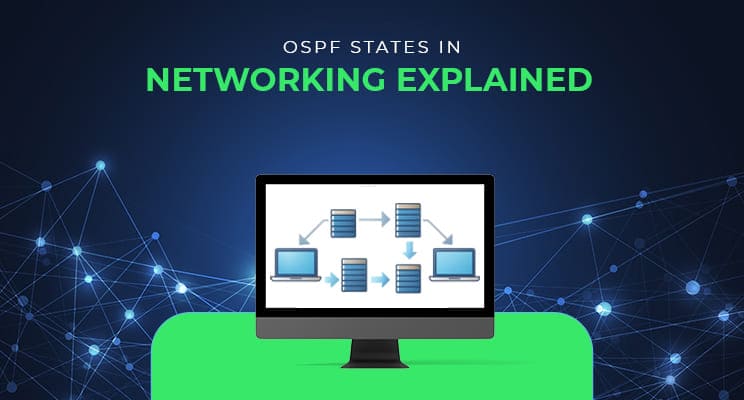Understanding OSPF LSA Types: A Guide for Networking Professionals
Mastering OSPF LSA Types: What Networking Professionals Need to Know
In today's rapidly changing IT infrastructure, it is imperative that network professionals master advanced networking protocols such as OSPF (Open Shortest Path First). One of the most important features of OSPF is LSA (Link-State Advertisement), which enables routers to exchange network topology information. Mastering OSPF LSA types is vital for designing effective and reliable networks.

In this UniNets guide, we will decompose OSPF LSAs, their types, and how they work in different networks topology designs. We'll also point out the importance of LSAs in current networking certifications and courses, such as Cisco training, Cisco courses, and Fortinet training.
What Is OSPF and Why Is It Important?
OSPF (Open Shortest Path First) is a dynamic routing protocol operating inside an autonomous system. OSPF is very much adopted in enterprise networks because of its scalability, high convergence speed, and link-state characteristic. OSPF enables routers to share routing information using LSAs in order to build an entire topology in networking.
What Are OSPF LSAs?
OSPF LSAs are messages that routers send to exchange information about their surrounding environment. These include interface addresses, router IDs, and adjacent networks. LSAs allow routers to construct a consistent view of networking and topology so they can determine the shortest path to every destination.
Types of OSPF LSAs ExplainedThere are many different kinds of OSPF LSAs, each serving a purpose. Here is a basic overview of the primary OSPF LSA types:
1. Type 1 – Router LSAIt is created by each router and defines its directly attached interfaces, link types, and link states. It stays within a single area.
2. Type 2 – Network LSACreated by the Designated Router (DR), it is a multi-access network (e.g., Ethernet) and contains a list of all routers attached to it.
3. Type 3 – Summary LSAEmployed by Area Border Routers (ABRs) to summarize inter-area routes. It minimizes routing tables.
4. Type 4 – ASBR Summary LSAThis LSA notifies an area of the presence of an Autonomous System Boundary Router (ASBR).
5. Type 5 – External LSAGenerated by ASBRs to promote external routes learned via other routing protocols such as BGP.
6. Type 7 – NSSA External LSAUtilized in Not-So-Stubby Areas (NSSA) for propagating external routes without making the area a full Type 5 advertisement area.
All of these OSPF LSA types are crucial in propagating routing information and constructing the routing table.
LSAs in Topologies:
How OSPF Functions in Network TopologiesUnderstanding the behavior of LSAs across various networks topology is critical. Let us go through some examples:
Bus Topology and OSPFThough not used in current enterprise environments, bus topology is still important to know about. In a bus topology, every device shares one communication line. The bus topology diagram typically shows a single cable lying in the middle connecting all nodes in a linear fashion.
When OSPF operates over a bus topology, LSAs are advertised and flooded across the common medium. But restrictions in the form of single-point failures and limited scalability hinder the presentation of this topology for OSPF's optimal utilization.
For the visual presentation, see the bus topology diagram, where nodes are illustrated connected along one backbone.
Real-World Applications of OSPF LSAsLSAs are not only theoretical—they are indispensable in actual network design and debugging. For instance:
In Cisco training, students are taught to set up and examine OSPF LSAs with Cisco routers and switches.
In Fortinet training, experts learn about how OSPF interacts with FortiGate devices and how LSA flooding and summarization are controlled.
Through Cisco courses, students acquire hands-on experience of how LSAs work in intricate networking and topology cases such as multi-area and inter-AS setups.
Why LSAs Are Important in Cisco and Fortinet CertificationsIt is an essential topic that is discussed in most networking certifications:
CCNA and CCNP emphasize routing protocols such as OSPF, including LSA types, areas, and design.
Fortinet NSE certifications also cover OSPF as network routing and security integration.
We at UniNets offer hands-on training with real-time simulations that include OSPF configuration, LSA analysis, and network troubleshooting.
OSPF LSAs in Networking and Topology DesignWhen designing a network, choosing the right topology in networking is crucial. Whether you’re working with a bus topology or a more modern mesh or star topology, understanding how LSAs behave within these designs will help optimize routing efficiency.
In bus topology, a router's Type 1 LSA will show directly connected networks along the shared medium.
In mesh topology, LSAs can travel along more than one redundant path, providing improved fault tolerance.
With the appropriate network topology combined with an appropriately designed OSPF installation, the best possible performance, scalability, and stability are guaranteed.
Final Thoughts
Learning OSPF LSA types is not an academic exercise—its a basic requirement for any networking pro. Regardless of whether you're learning from Cisco classes, taking Fortinet training, or building a network from the ground up, LSAs are the raw materials of smart routing calculations.
